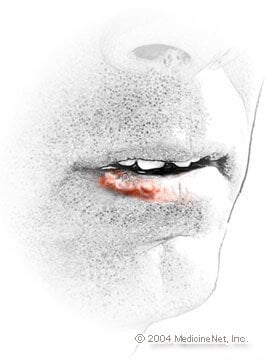Definition of Blister, fever
Blister, fever: A small sore situated on the face or in the mouth that causes pain, burning, or itching before bursting and crusting over. The favorite locations are on the lips, chin or cheeks and in the nostrils. Less frequent sites are the gums or roof of the mouth (the palate).
Fever blisters are caused by herpes simplex virus. It lies latent (dormant) in the body and is reawakened (reactivated) by factors such as stress, sunburn, or fever from a wide range of infectious diseases including colds. Recurrences are less common after age 35. Sunscreen (SPF 15 or more) on the lips helps to prevent recurrences of herpes from sunburn.
The virus is highly contagious when fever blisters are present. It is spread by kissing. Children become infected by contact with someone who has a fever blister and then they spread the virus by rubbing their cold sore and touching other children. A person with fever blisters should be careful not to touch the blisters and spread the virus to new sites, such as the eyes or genitals.
There is no cure for fever blisters. Medications that can relieve some of the pain and discomfort include ointments that numb the blisters, antibiotics that control secondary bacterial infections, and ointments that soften the crests of the sores.
Fever blisters have plagued people for thousands of years. In ancient Rome, an epidemic of fever blisters prompted Emperor Tiberius to ban kissing in public ceremonies. Today, fever blisters still occur in epidemic proportions. About 100 million episodes of recurrent fever blisters occur yearly in the United States alone.
Fever blisters are also called cold sores, labial herpes (herpes labialis, in Latin) and febrile herpes (herpes febrilis, in Latin).


